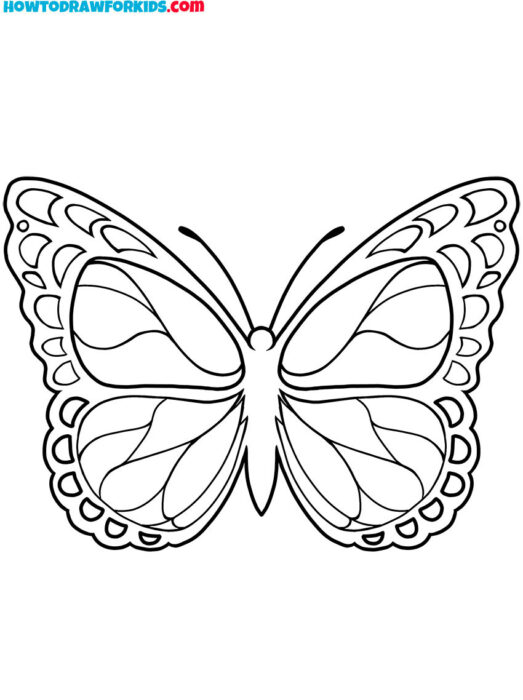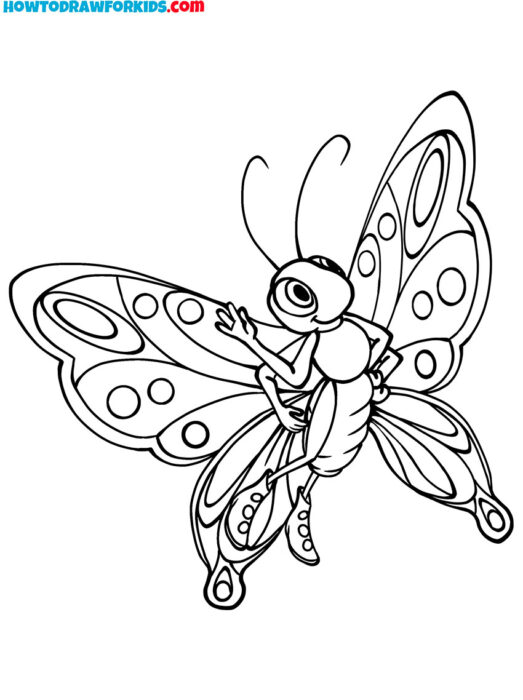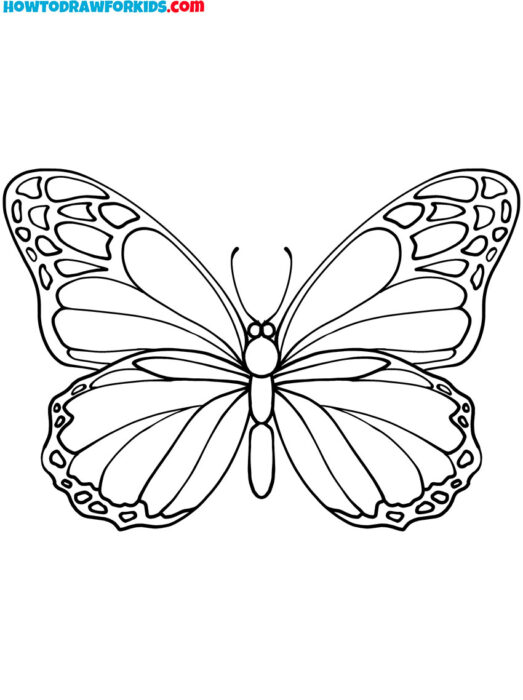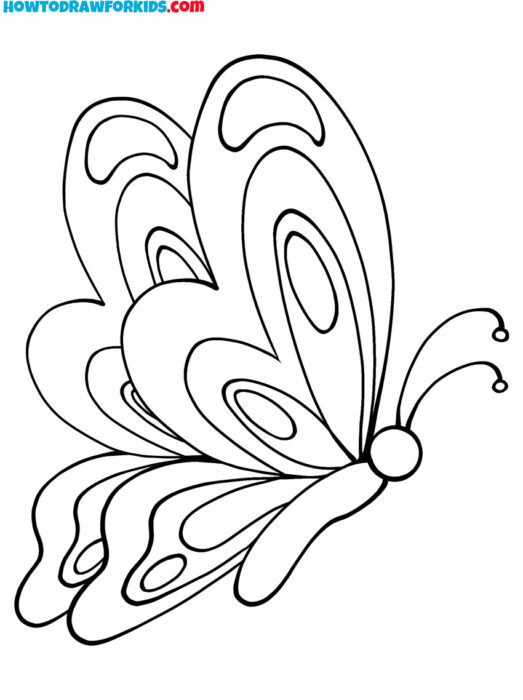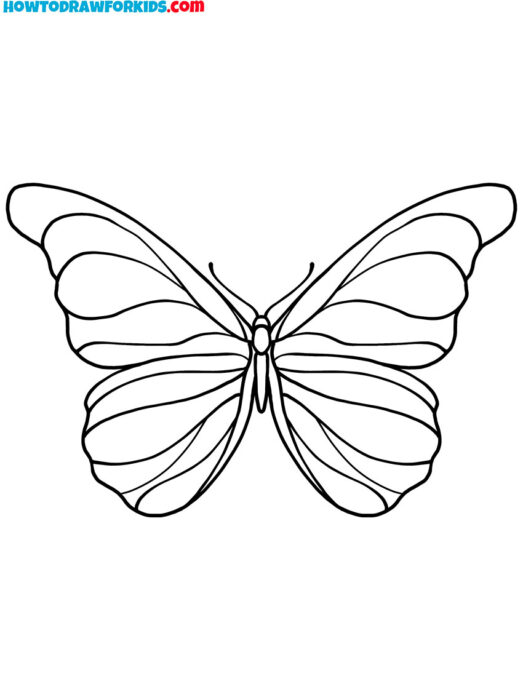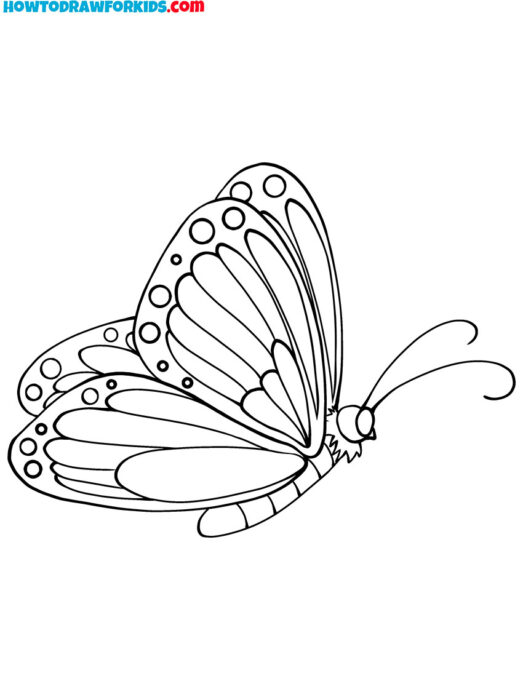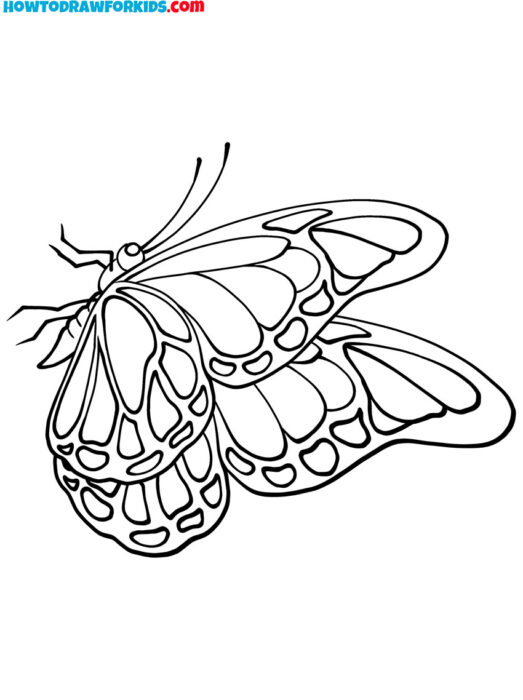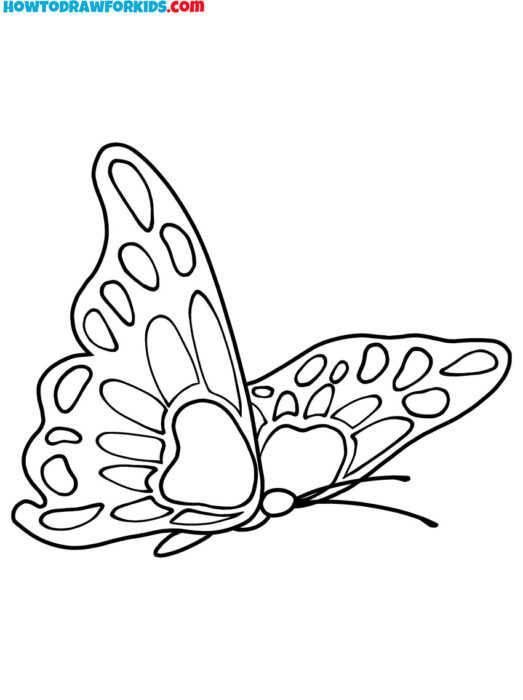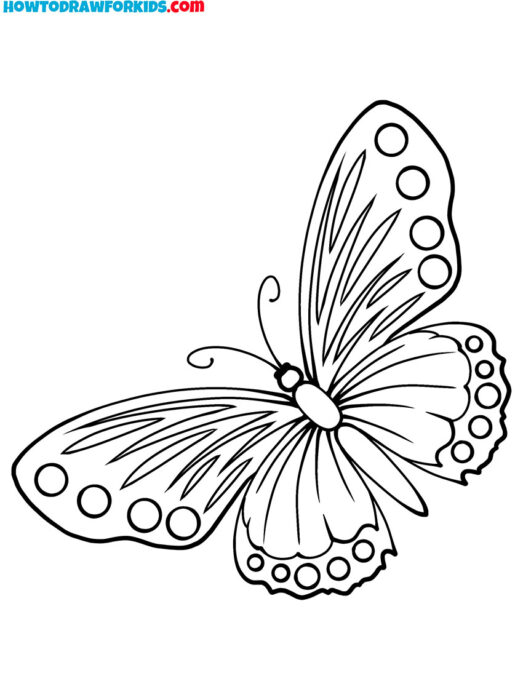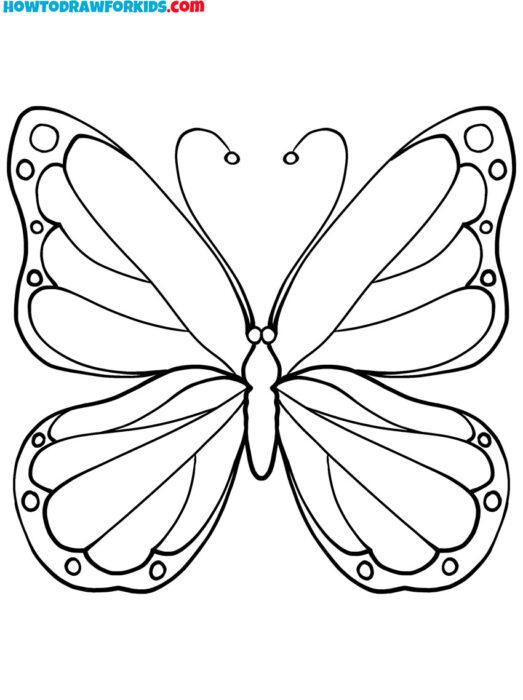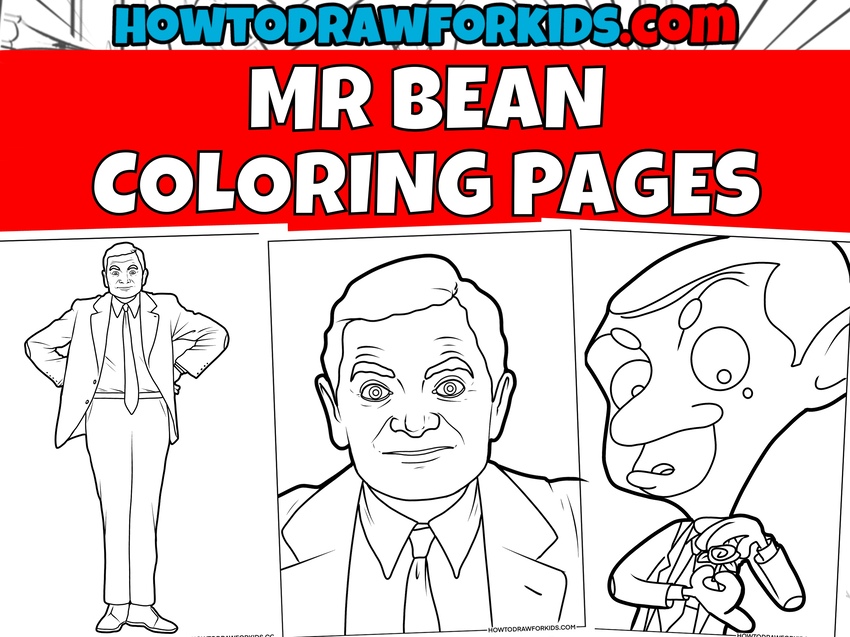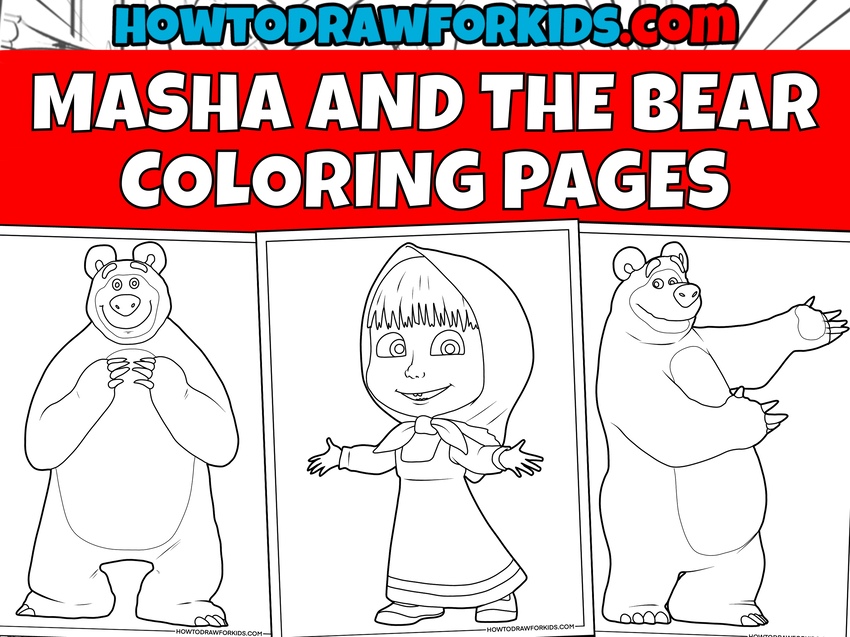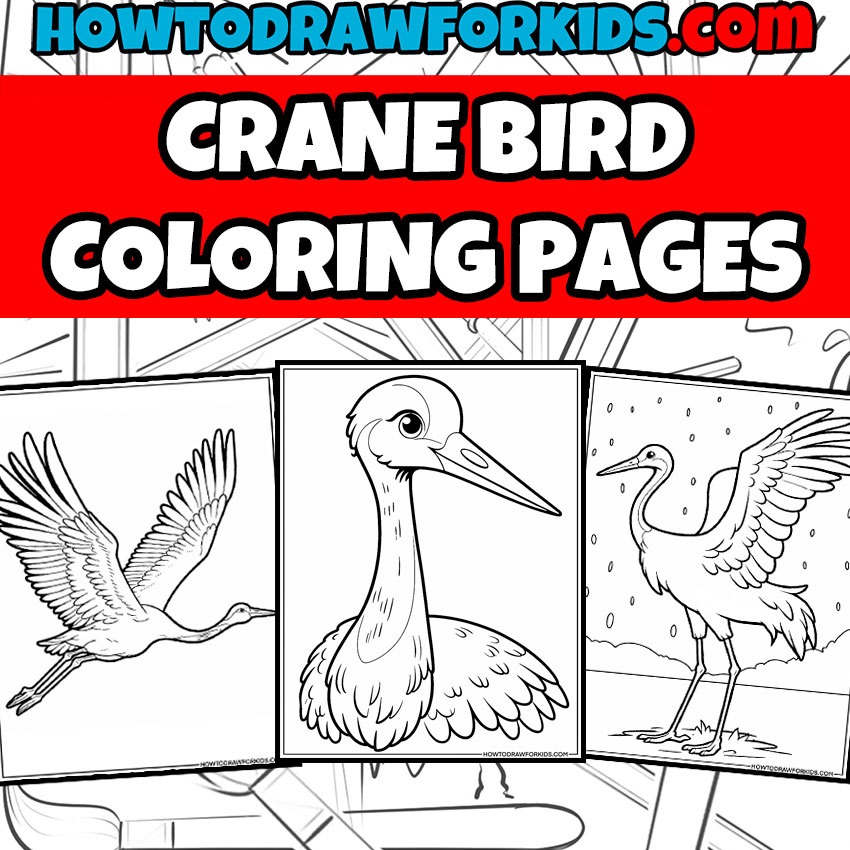Butterfly Coloring Pages
In this collection of butterfly coloring pages, I present a wide range of illustrations showcasing these beautiful insects in various styles and diverse settings.
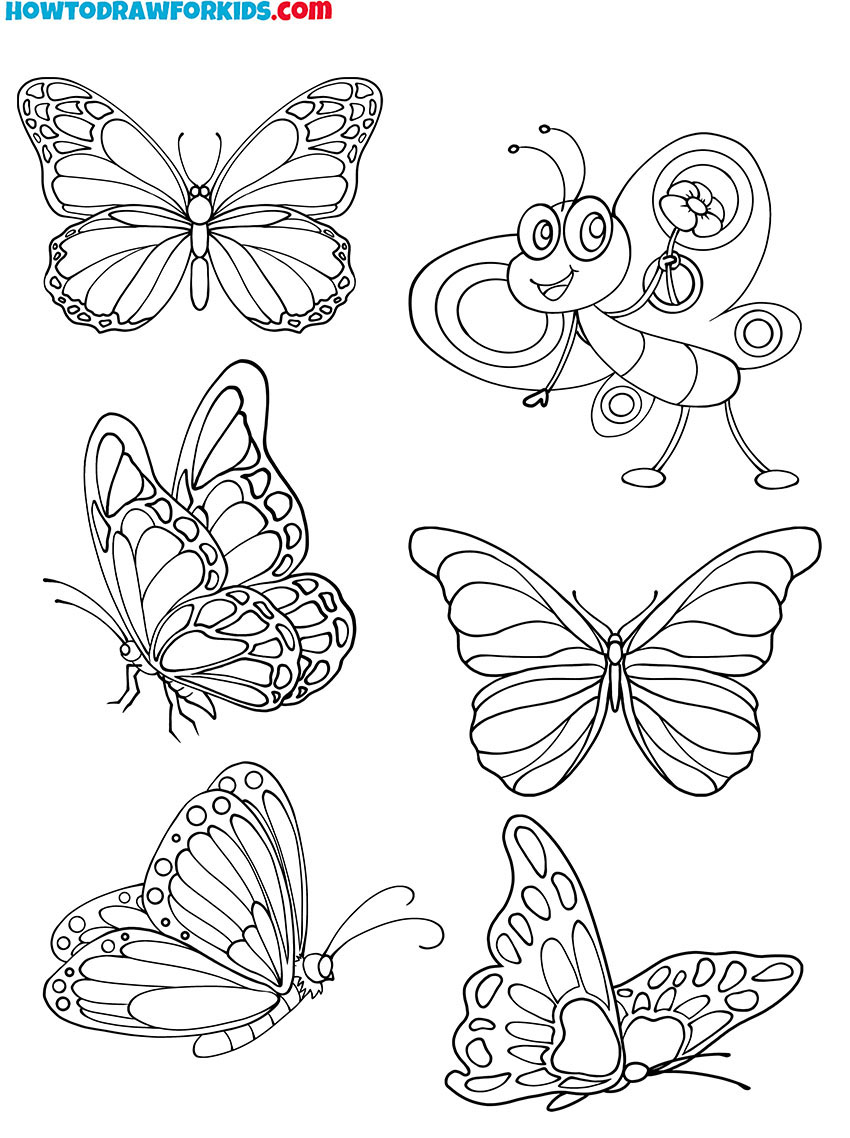
Butterfly Coloring Pages: Introduction
This collection of butterfly coloring pages offers various illustrations of butterflies, which are known for their diversity in shapes, patterns, and colors.
As you begin coloring these butterfly drawings, it’s important to think about how these features appear in nature. Butterflies, or “Lepidoptera” as they are scientifically called, come in many species, so you can consider mimicking natural patterns or creating your own combinations based on their unique characteristics.
While coloring, pay attention to the details on the wings, such as the spots, veins, and symmetry. The patterns are often mirror images on both wings, which can help guide your coloring choices. Different species of butterflies display various color palettes, from vibrant yellows, oranges, and blues to more muted shades like browns and whites. Additionally, some butterflies have specific color changes that serve as camouflage or warning signals to predators.
You may want to think about how to replicate this in your coloring. For example, the Monarch butterfly has orange wings with black borders and white spots, while the Blue Morpho features vivid blue wings with black edges. You can research other butterfly species for inspiration or experiment with your own color combinations.
Finally, remember to vary your approach depending on the environment you imagine for the butterfly. If it’s in a garden, brighter colors might suit the scene. For a more neutral or shadowy setting, darker, earthier tones might be more appropriate.
Butterfly Coloring Pages
Color Schemes for Butterfly Coloring Pages
When working on butterfly coloring pages, there are several ways to approach the task, depending on the style you’re aiming for. Whether you want a realistic look, a cartoon effect, or a more stylized representation, each requires different considerations.
For a realistic approach, it’s helpful to reference real butterfly species, paying close attention to the symmetry of their wings and the patterns that form across them. Many butterflies, like the Monarch or the Swallowtail, exhibit vibrant colors with intricate details, such as spots, stripes, and veins. These patterns are typically mirrored on both wings, so maintaining symmetry in your butterfly coloring pages is important.
Adding shading can give the wings more realism, making them appear more three-dimensional. It’s also effective to use gradients, where colors transition smoothly from one shade to another, such as the blue to black fade seen in the Blue Morpho butterfly.
If you’re looking to create a more cartoon-like butterfly, the focus shifts to bolder, simplified designs. Cartoon butterflies often have exaggerated features, and you can use bright, unrealistic colors. In this style, symmetry can be less strict.
The lines outlining the butterfly’s wings are usually thicker and more defined in cartoon coloring. Bold, flat colors often replace gradients and shading. Simpler shapes like circles or stripes can substitute for the complex patterns found on real butterflies.
Stylized coloring offers more room for creative freedom, where you can experiment with different techniques. Some may choose an abstract style, where the patterns and colors are unconventional, deviating from the natural look of butterflies.
Geometric shapes and straight lines can replace the more fluid forms of the wings, creating a unique appearance. Minimalist coloring is another option, reducing the butterfly to its essential forms. With just a few colors and limited detail, you can still create interesting images.
Interesting Background Ideas
When coloring butterflies, the background plays a significant role in improving the overall composition. Several ideas can be considered when deciding on an appropriate background, and these ideas can complement the butterfly itself.
One common background idea is to include flowers. Since butterflies are often seen around flowers, it makes sense to draw a flower or a group of flowers to create a natural scene. When working with this concept, you can choose various types of flowers depending on the mood you want to create.
For example, simple flowers like daisies or sunflowers may provide a bright and nice background, while more intricate flowers such as roses or orchids may add a more detailed and refined element.
Another idea for the background could be to draw a flying butterfly. Including more butterflies in the background, either in flight or resting on plants, can make the scene feel more dynamic. You can vary the size and placement of these additional butterflies to give the impression of distance and perspective. They don’t need to be as detailed as the main subject but should be colored in a way that complements the primary butterfly.
Alternatively, a simple outdoor scene can also be effective. Drawing a background with grass, a sky, and maybe a few clouds provides a natural setting without overwhelming the butterfly. The grass can be colored in various shades of green, while the sky can range from a clear blue to a more dramatic sunset or cloudy appearance.
Lastly, for those who prefer a minimalistic approach, a plain background might also work well. Leaving the background blank or using a light wash of color can make the butterfly stand out as the focal point of the page. This approach is simple but effective when you want the butterfly itself to be the main focus of the image.
In summary, backgrounds for butterfly coloring pages can range from simple outdoor scenes to more detailed elements like different flowers or flying butterflies.
Conclusion
This concludes the session on butterfly coloring pages. Keep in mind, this is just a small part of the coloring pages and drawing lessons available on my website. You can also check out the winter-themed coloring pages and Halloween coloring sheets for more options.
Additionally, you can stay informed about any new coloring pages and drawing tutorials by following me on social media. This will help you stay updated on the latest additions to my collections.


